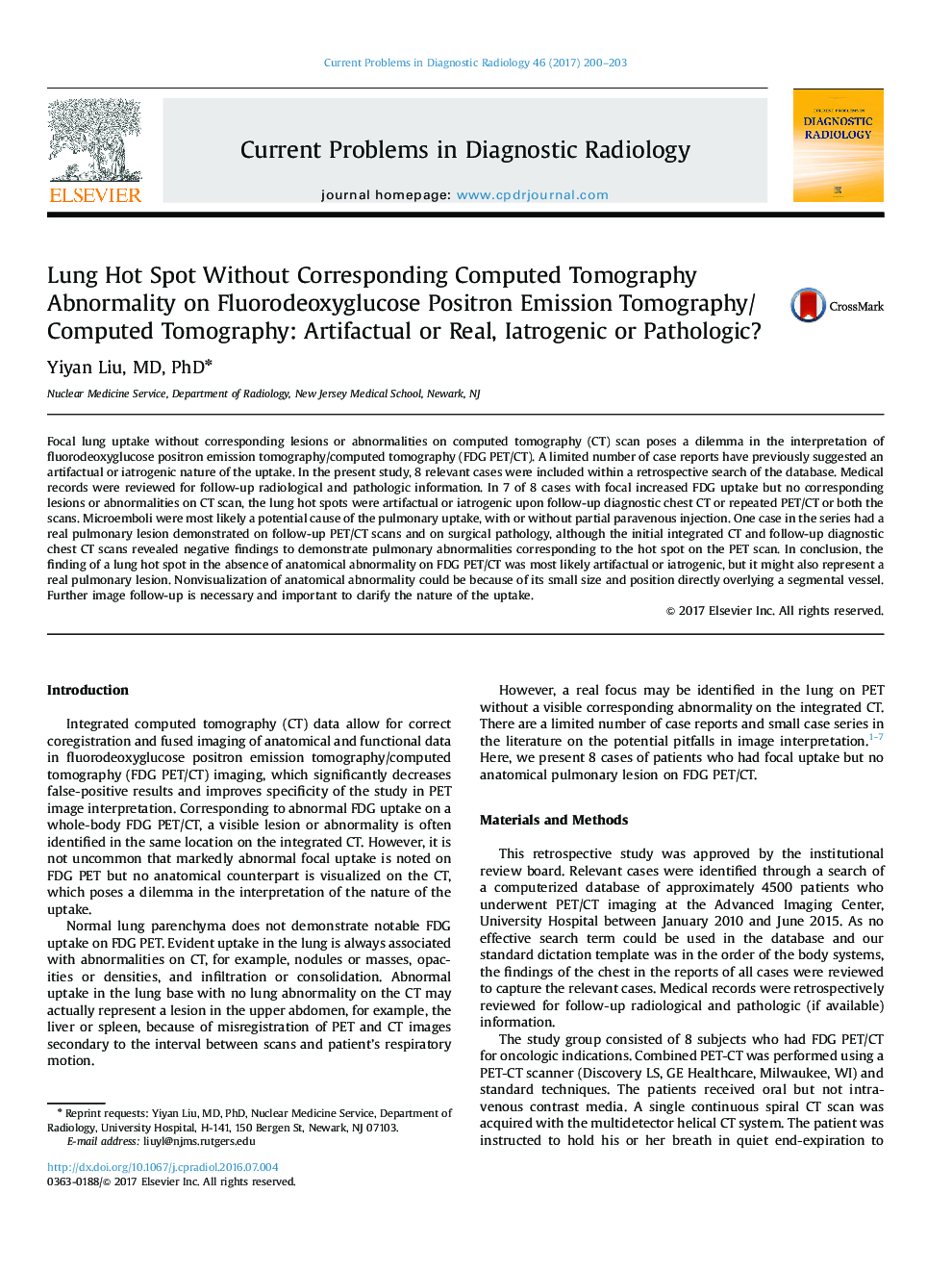| Article ID | Journal | Published Year | Pages | File Type |
|---|---|---|---|---|
| 5725944 | Current Problems in Diagnostic Radiology | 2017 | 4 Pages |
Focal lung uptake without corresponding lesions or abnormalities on computed tomography (CT) scan poses a dilemma in the interpretation of fluorodeoxyglucose positron emission tomography/computed tomography (FDG PET/CT). A limited number of case reports have previously suggested an artifactual or iatrogenic nature of the uptake. In the present study, 8 relevant cases were included within a retrospective search of the database. Medical records were reviewed for follow-up radiological and pathologic information. In 7 of 8 cases with focal increased FDG uptake but no corresponding lesions or abnormalities on CT scan, the lung hot spots were artifactual or iatrogenic upon follow-up diagnostic chest CT or repeated PET/CT or both the scans. Microemboli were most likely a potential cause of the pulmonary uptake, with or without partial paravenous injection. One case in the series had a real pulmonary lesion demonstrated on follow-up PET/CT scans and on surgical pathology, although the initial integrated CT and follow-up diagnostic chest CT scans revealed negative findings to demonstrate pulmonary abnormalities corresponding to the hot spot on the PET scan. In conclusion, the finding of a lung hot spot in the absence of anatomical abnormality on FDG PET/CT was most likely artifactual or iatrogenic, but it might also represent a real pulmonary lesion. Nonvisualization of anatomical abnormality could be because of its small size and position directly overlying a segmental vessel. Further image follow-up is necessary and important to clarify the nature of the uptake.
